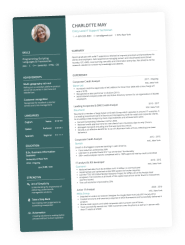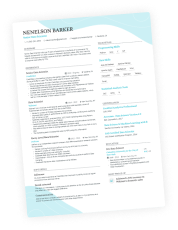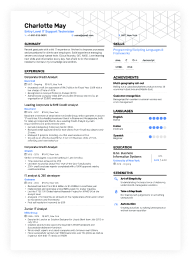First impressions start before you say a single word. Before you even shake hands or open your mouth, your outfit is already doing the talking. What you wear to a job interview sends a message: You’re confident, serious, and you respect the company’s expectations. That means understanding how to dress for an interview is more than a fashion choice—it’s a career strategy.
Whether you're applying for your first internship, switching industries mid-career, or meeting your dream employer over Zoom, choosing the right interview outfit helps you walk in with self-assurance.
In this guide, you'll learn what to wear to a job interview for men, women, and teens—including tips tailored to virtual interviews, seasonal climates, and specific industries.
Key takeaways
- First impressions matter—your outfit often speaks before you do.
- “Business casual” doesn’t mean sneakers and hoodies—know the difference.
- Women should stick with polished separates, modest blouses, and clean accessories.
- Men should favor suits or business casual staples like blazers and dress shirts.
- Avoid flashy logos, bold patterns, and strong fragrances.
- Summer interview? Choose breathable fabrics like cotton or linen.
- Teenagers interviewing for their first job should aim for smart, clean basics.
- Comfort is key—but professionalism is non-negotiable.
- When in doubt, it’s always safer to be slightly overdressed.
Researching company expectations: know the dress code before you dress
Different companies—and different industries—have vastly different norms when it comes to what to wear for a job interview. Fortunately, there are easy ways to uncover those expectations.
Start with the company's website. Look at the About Us and Meet Our Team sections. You’ll often find employee bios and photos, which give you visual clues about what people typically wear.
Check social media profiles like LinkedIn, Instagram, and even Google Maps for photos of the office. These often show group outings, events, or in-office shots that can help you gauge whether the vibe is more corporate or casual.
PRO TIP
Run a quick industry search: “professional office dress code guidelines for advertising agencies,” or “what to wear to a tech startup interview.” You can also email your interview point of contact and ask directly: “Could you share the typical dress code for candidates interviewing with your team?”
Pay attention to the tattoo policy or other personal appearance standards. If you're in a visible role, some industries may expect tattoos to be covered. Research ahead so you're not caught off guard.
General interview outfit guidelines: what every candidate needs to know
No matter where you’re applying, a few general rules will help you assemble a successful interview outfit.
In many fields, dressing in business casual or formal wear—such as a suit, dress pants, or coordinated separates—is generally a reliable choice.
Start with business professional clothing
That usually means a blazer or jacket, dress shirt or blouse, and neutral slacks or a tailored skirt. Even if you're applying to a business-casual company, leaning formal for the interview shows preparation and respect.
Fabrics matter
Choose breathable, high-quality materials like cotton, wool blends, or wrinkle-resistant knits. These fabrics wear well throughout the day and help you stay cool under pressure—especially in interviews that require travel or waiting time.
Stick to neutral colors
Navy, black, gray, beige, and white are always safe. If you're introducing color or patterns, do so subtly—a pinstripe or muted print works better than bold graphics.
Plan for the weather
If you’re heading to an interview in the rain or snow, bring a rain-repellent coat and compact umbrella. Your outerwear should still look professional; skip bright rain ponchos or branded sports jackets.
Now, let's explore how different roles and industries require different outfit choices.
Role- and industry-specific advice: tailor your look to the job
There’s no one-size-fits-all approach to interview attire. What you wear should reflect the professional standards of the industry and the role you're targeting.
For formal industries like banking, law, and consulting, a classic suit is expected. Stick with gray, black, or navy suits, pressed dress shirts, and tailored pants or skirts. Your goal is to come across as refined, serious, and trustworthy.
For creative or casual industries (think tech, design, or media), interview attire can be more flexible. Try a blazer with chinos or a minimalist dress with clean sneakers—just don’t go too casual. Jeans, even nice ones, are rarely appropriate unless explicitly encouraged.
For internships and summer jobs, especially in retail or hospitality, opt for smart casual: a collared shirt or blouse, tailored slacks, or a modest skirt. Avoid ripped jeans, shorts, or graphic T-shirts. Even if the role seems informal, your outfit should say, “I take this seriously.”
Dressing “professionally” doesn’t mean dressing identically. If you show up looking like a copy-paste of every other candidate, you’ve already started blending in. Wear something that respects the role and hints at your personality—a bold color, a signature accessory, or even sharp sneakers (if the culture allows).
Confidence isn't just worn on your face—it’s stitched into the details.
Writer’s take
Interviewing remotely? Here's how to get your virtual outfit right.
Virtual interview attire: look the part on camera
If you're prepping for a remote job or online interview, don’t assume you can dress down. Your appearance still contributes to a professional image, even on a screen.
Dress like it’s in person. That means a neat blouse or button-down, a smart blazer, and neutral tones. Even if you’re only visible from the waist up, dressing fully can help reduce camera mishaps (like needing to stand suddenly) and boost confidence.
Choose colors that work well on camera. Avoid stark white (which can blow out your webcam) and busy patterns that may flicker onscreen. Instead, opt for solid shades like blue, burgundy, or soft gray.
Comfort matters, but so does mindset. Studies show that dressing professionally, even at home, can enhance focus and presence—two things every interviewer wants to see.
Next, we’ll walk through gender-specific tips to fine-tune your look.
Gender disclaimer
In this guide, we refer to traditional “men’s” and “women’s” interview attire to provide clear, practical advice. That said, your outfit should reflect who you are, regardless of gender. Whether you identify as male, female, nonbinary, or are exploring your own style, dressing for an interview should be about confidence, professionalism, and authenticity.
We encourage everyone to wear what aligns with their identity—and to feel empowered doing so.
What should a female wear to a job interview?
When considering what to wear to a job interview, female candidates have several polished, professional options.
Try this classic formula:
- Neutral pantsuit or skirt suit in navy, gray, or black.
- Button-down shirt or modest blouse.
- Interview outfits for women can also include structured dresses with a blazer.
Footwear matters
Opt for closed-toe flats or low pumps. Avoid overly high heels or sandals.
Keep accessories simple
A watch, small earrings, or a slim necklace can complete the look without distracting. Your bag should be clean, structured, and large enough to hold your essentials.
Avoid these things:
Anything sheer, tight, low-cut, or overly casual. That includes tank tops, leggings, and flashy prints.
For the guys, here’s what works best across casual and formal interviews.
What should a male wear to a job interview?
If you’re wondering what to wear to a job interview, male edition, here’s your cheat sheet:
For formal workplaces:
- Well-fitted suit in black, navy, or gray.
- White or light blue dress shirt, clean leather shoes, and a simple tie.
- Matching belt and socks to complete the look.
For business casual settings:
- Blazer + button-down + chinos or dark trousers.
- Loafers or dress shoes.
- Skip the tie unless you know it’s expected.
Avoid these things:
Sneakers, visible brand logos, or loud prints. What not to wear to a job interview includes anything that looks like weekend wear.
Interviewing for the first time? Here’s how teens can dress to impress.
What should a teenager wear to a job interview?
If you’re a teenager prepping for your first job interview, your goal is to look mature and well-prepared—without overdoing it.
Great options include
- Polo shirt or button-down with khakis.
- A neat blouse and slacks or skirt.
- Simple flats or clean sneakers (if the setting allows).
Avoid these things:
T-shirts, hoodies, leggings, ripped jeans, or anything overly trendy.
Even if it’s just a part-time gig, dressing well shows maturity and enthusiasm.
Bonus tip: bring a copy of your resume—even if it's just babysitting or school projects.
Finally, let’s recap what not to do, so you can avoid last-minute outfit regrets.
Interview outfit final checklist: accessories & grooming
Before heading out, run through this list to make sure your look is polished and interview-ready:
The checklist
- Watch, bag, and accessories are clean, simple, and professional.
- Shoes are closed-toe, clean, and appropriate for the role.
- Hair is neat and styled with intention—pulled back, trimmed, or freshly brushed.
- Nails are trimmed and clean (no chipped polish or excessive decoration).
- Fragrance is subtle or skipped entirely.
- Facial hair is groomed or clean-shaven, depending on your usual look and the role.
- Tattoos or piercings are covered or minimized (if needed, based on the company’s culture).
- Clothing is wrinkle-free and fits well—tailored where possible.
- You've done the mirror test: nothing feels out of place or distracting.
What not to wear to a job interview
Here’s what to leave in the closet.
Don’t wear:
- Jeans, shorts, or any overly casual wear.
- Sneakers, flip-flops, or worn-out shoes.
- T-shirts, especially with graphics or slogans.
- Loud colors, busy prints, or mismatched pieces.
- Too much cologne, perfume, or flashy jewelry.
- Wrinkled or ill-fitting clothes—tailoring matters.
Avoid clothing with big logos or brand names, especially ones associated with sportswear, nightlife, or loud fashion. Aim for an interview outfit that centers attention on you, not what you’re wearing.
Conclusion
What you wear to a job interview is more than just decoration—it’s part of your personal brand. Your interview clothes should reflect the role you want, the respect you bring, and the confidence you carry. Whether you're dressing for a casual startup, a corporate boardroom, or a remote Zoom interview, the right outfit helps you show up as the best version of yourself.
Dress smart, dress thoughtfully, and dress like it matters—because it does!
Make one that's truly you.



